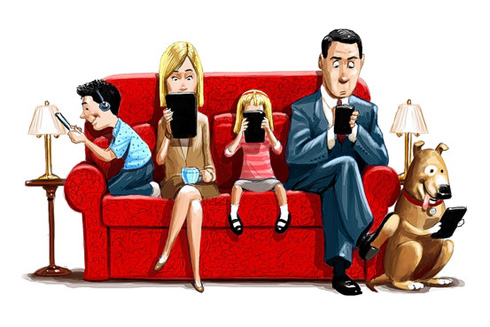It’s the 2nd week of Leading Strategic Innovation in Organizations and the focus this week has been on individual constraints to innovation. According to Owen’s there are three main individual constraints to innovation: perception, intellection, and expression.
I’ve taken a cue from the last course I took (#edcmooc) and I’m making an attempt to define what I’ve learned this week visually (see the image above). But what I’ve really taken away from this week’s content are the following three bits:
Lesson 1: “There is no such thing as a creative personality.”
In other words, creative people aren’t born, they’re made or developed by their learning and experience. Numerous studies have shown that children are naturally open to experience and creative. But arguably our education system and life experience shapes or constrains this ability to be creative. We are taught the proper way to solve problems or how to keep our ideas and thoughts in check.
What Owens does argue is that there are personality traits conducive to creativity, and these are:
- Agreeableness
- Extroversion
- Conscientiousness
- Openness
Logically, if you are open-minded to multiple ways of seeing a problem you’ll come up with a number of different ways to solve it. If you’re agreeable and able to connect effectively with others, you’re better able to explain your solutions to them. Neurotic behaviors and thinking on the other hand can negatively affect one’s ability to be creative here’s an example of how neurotic thinking can prevent creativity and innovative problem solving.
“I can’t share that solution or express that that in front of others, they’ll think I’m a.)wrong, b.)stupid and I’ll just embarrass myself.”
In order to be a truly effective at innovation, you need to be able to share your ideas freely without fear of being judged. Perhaps that’s ultimately what makes Woody Allen one of the most creative storytellers of our time. He’s portrayed himself as the lovable neurotic, but he has never flinched at attempting to portray this neurosis in stories that examine the human condition from different perspectives.
Lesson 2: It’s important to always approach the problem from multiple perspectives.
In reading through Chapter 2 of “Creative People Must be Stopped, I ran across the story of a playwright who purchased different “odd magazines” for hobbies or topics foreign to her. Her purpose was to “see” things from that particular magazine audience’s views and therefore reinterpret what might be seen in her own vision portrayed in her plays. Of course, your savvy marketing professional would simply call this focusing on your target markets, but there’s something so simply empowering about this approach to seeing other’s views of the same situation or problem you’re attempting to solve.
Here are some questions to ask yourself when you’re analyzing a problem:
- How would someone who is completely polar opposite to me see this problem? How would they describe it?
- Why might they not see it as a problem?
- What solutions may they came up with?
Lesson 3: It’s not how cool your idea is, it’s how you sell it to your audience.
Sometimes, and I admit I’m guilty of this as well, when you come up with what you think is a ‘great idea’ its logic seems to inherently obvious to you and therefore everyone else should see it that way. However, other’s way of viewing things may NOT be aligned with your own. I feel that this is one of my greatest Individual Constraints to innovation. I’m not always adept and explaining or selling my solutions to others. In actuality, I am really the Asian guy in the image above from Kathy Sierra’s blog post from years back. I often have hunches or feelings about when things are right or wrong, but I’m not always able to explain them to other people around me. This is where exercises and questions from my previous lesson would come in handy. Or…
Developing a ‘common language’ might be helpful.
I had to laugh when Owens made a dig at using ‘buzzwords.’ As he noted, they may make you feel important, but they’re not a great way of gaining common understanding of both the problem and your proposed solution. At one of my former jobs, a former colleague of mine and I played a game called B.S. Bingo in meetings that seemed like more verbal exposition than development or planning (or action). Though arguably, these same buzzwords are the common language used by people in the corporate world to talk with each other. I do agree with Owens that when they’re bandied about to elevate your business klout or savvy they’re simply about posturing. However, I should consider that if this is the ‘speak’ that’s being used by people who are using this language, I should develop translations of my ideas in this language.
I’ve decided to create a template for writing out my ideas to better articulate them. It’s pretty simple. I would take the idea as I see it and then translate it into at least three or four different perspectives including the intended audience or end user, my peers, my boss, and my boss’s boss. This may take a little more discipline than I’m used to.



















You must be logged in to post a comment.